It’s prime pawpaw picking time. What you need to know about foraging ‘Missouri bananas’
Editor’s Note: Kansas City Star visuals intern Zachary Linhares is a native of Missouri and has a passion for pawpaws, the official state fruit of Missouri. Linhares shared what he knows about how to find what many consider a delicious treat and how to eat them.
There is a secret tropical fruit hiding in Missouri’s forests.
Known as the Missouri banana, the American custard apple, or more commonly, the pawpaw, it is an elusive but delicious fruit. The custard-like inside resembles the taste of a mango, banana, and pineapple combined.
The fruit can also be found in the woods of Eastern Kansas but is not as widespread as it is in Missouri.
All throughout the Kansas City metro pawpaw trees line hiking trails, river bottoms, ravines, and wooded slopes. The pawpaw fruit has its roots in this area tracing back 56 million years and is the official state fruit of Missouri, according to the Missouri Department of Conservation.
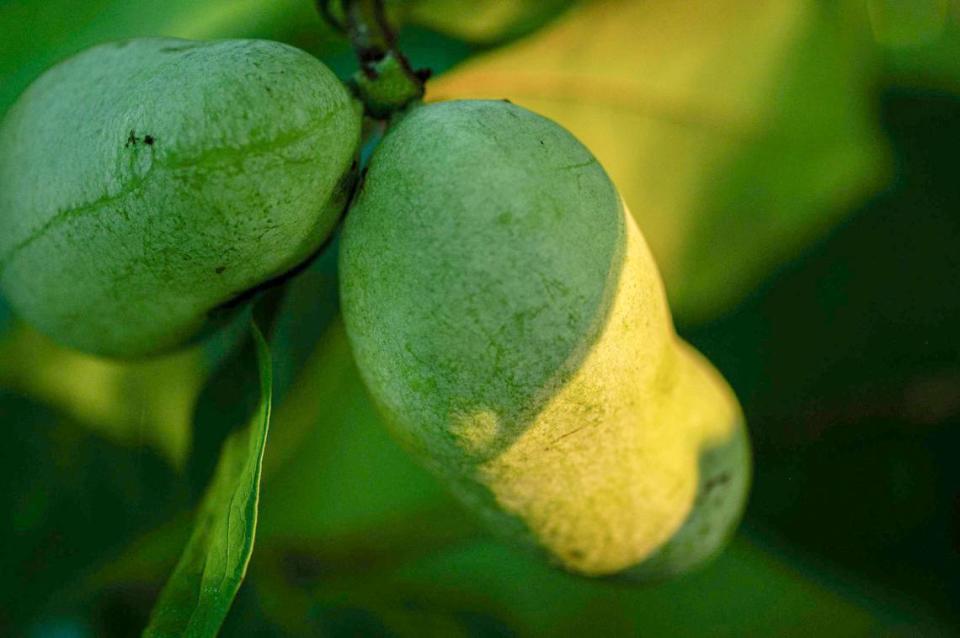
Pawpaws are easily identifiable if you know what you are looking for. Luckily, you won’t find a pawpaw tree by itself. The slim and soft barked trees grow in groves with their slender, waxy leaves hanging above you. When scouting for locations to find pawpaws, look for dense wooded areas along slopes, ravines, and river bottoms. Pawpaws grow best in the shade of larger trees and in moist environments.
If you have a good eye, you will notice bundles of fruit hanging from the trees. The pawpaw resembles a mango and ranges from three to five inches in length.
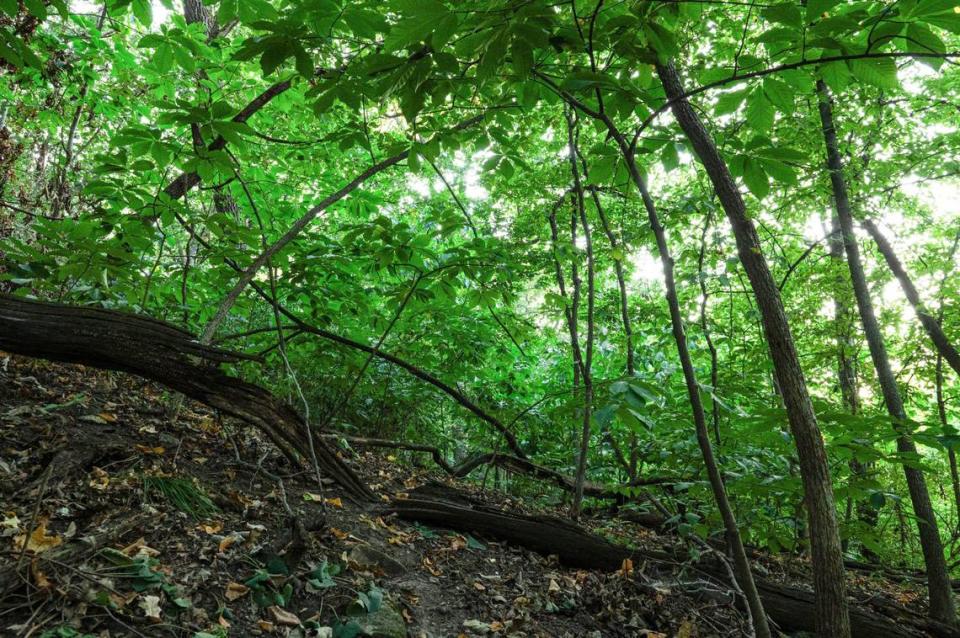
An unripe pawpaw is hard and green. It will turn a yellowish hue when ripe and give off a sweet odor and be soft to the touch. If a pawpaw is not fully ripe, it is inedible and it won’t ripen on your countertop.
Do not eat the seeds or the skin of pawpaws. Those parts of the plant contain toxins that can make humans ill.
Pawpaw season ranges from early September to the first few weeks of October.
Harvesting pawpaw is a delicate process. The easiest way to obtain a pawpaw is looking on the ground in a grove a tree’s for fallen fruits.
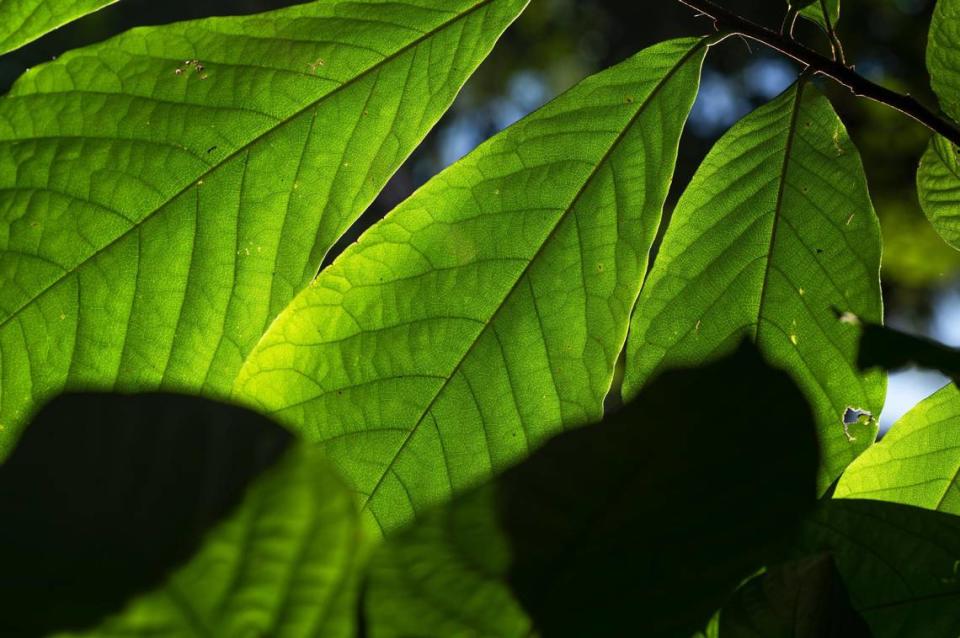
Once the fruit hits the forest floor, they are normally good to eat. You can also pick the fruit from low hanging branches. The most common way to harvest is by lightly shaking the tree to loosen the ripe pawpaws that are too high be picked by hand. Be cautious though, ripe, along with unripe pawpaws tend to fall to the ground if a tree is shaken too hard. Shake gently.
There are a number of public locations around the Kansas City metro where you can find pawpaws. The tropical fruit can be found along Indian Creek Trail, George E. Kessler Park on Cliff Drive, White Alloe Creek Conservation Area and Hidden Valley Park.
There are some rules that come with getting your pawpaws in the wild. The Missouri Department of Conservation has rules and regulations that must be followed to sustainably and lawfully harvest pawpaw.
Harvesting pawpaws for personal consumption is legal in most MDC areas with the exception of nature centers, conservation headquarters and natural areas. If you are harvesting on private property, make sure to get permission from the owner before entering the land.
Kansas Department of Wildlife and Parks allows for the picking of fruits for noncommercial use on the state’s public lands.
Once harvested, pawpaw must be processed, eaten, or frozen for later consumption. They have a limited shelf life and tend to go bad only a few days after harvesting.
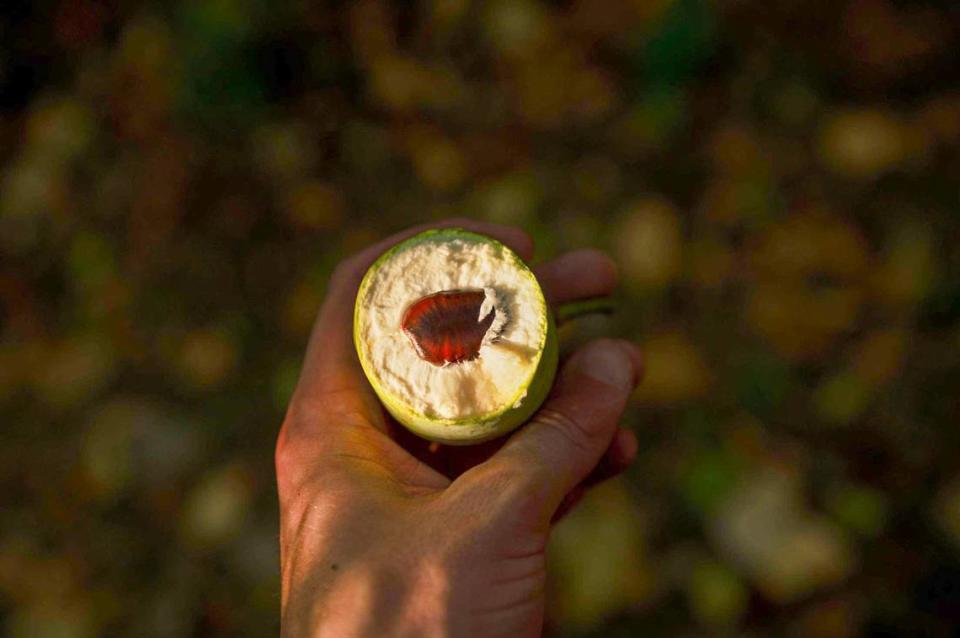
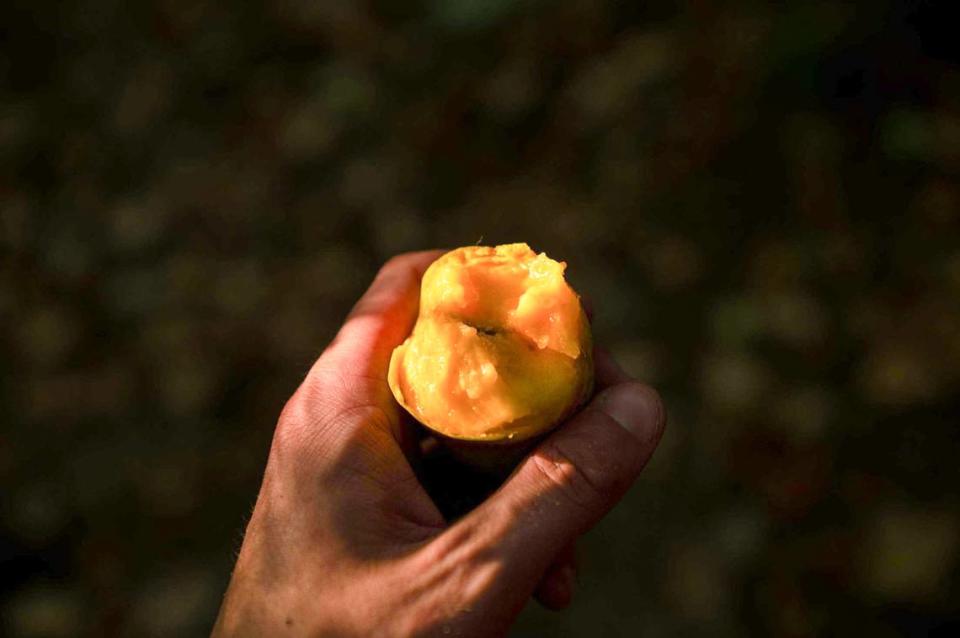
There are a few different ways to process the pawpaw. The most common is to split open the fruit in the middle and eat the yellow custard-like flesh on the inside.
If you want to store them for later, split the fruit open and squeeze the insides into a bowl. Carefully remove all of the brown seeds from the bowl and store in your freezer. Pawpaws are great as is or they can be used as a replacement for bananas in a number of baked goods and desserts.
If you can’t go out and harvest Pawpaw yourself, you might get lucky and find a private seller on Facebook marketplace or find local vendors at farmers markets selling pawpaws or products made with it.

